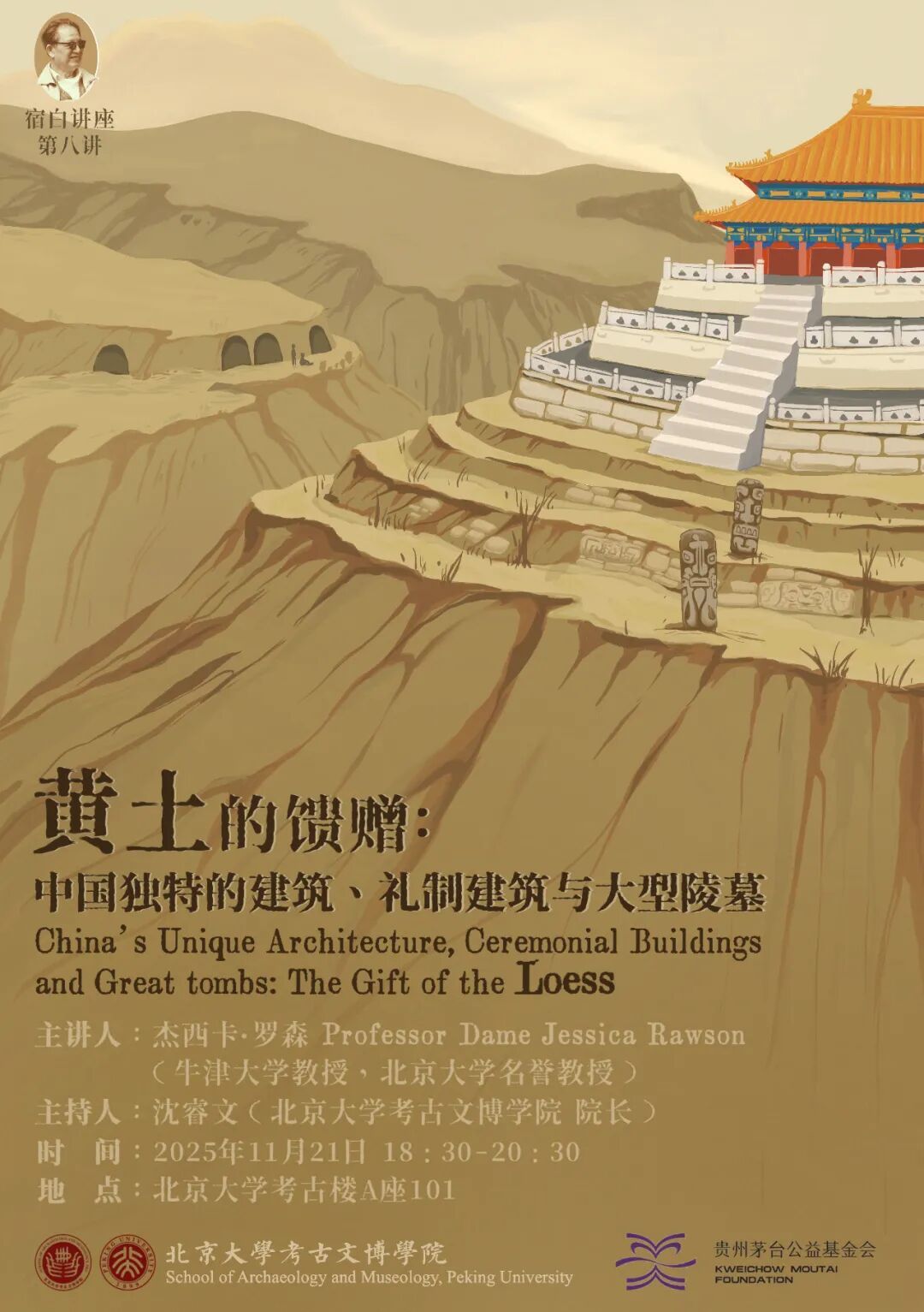
宿白讲座 第八讲
杰西卡·罗森:黄土的馈赠——中国独特的建筑、礼制建筑与大型陵墓
主讲:杰西卡·罗森 (牛津大学教授,北京大学名誉教授)
Professor Dame Jessica Rawson
主持:沈睿文(北京大学考古文博学院 院长)
时间:2025年11月21日,18:30—20:30
地点:北京大学考古文博学院考古楼A座101室
摘要:
紫禁城恢宏的礼仪殿堂与北京近郊深邃的明代帝陵,标志着中国独特建筑传统的巅峰。自十二世纪《营造法式》问世以来,中国宫殿与寺庙精妙的木构建筑已广为人知。然而,其中一项显著特征却常被忽视——那便是将众多核心建筑托举至惊人高度的多层高台。不仅主殿如此,配殿的台基相应较低,甚至连门阙入口也通过台基来标示等级。
本次讲座将介绍黄土高原正是孕育这一夯筑高台传统的关键区域,其历史可追溯至公元前三千纪末至二千纪,陕西芦山峁与石峁遗址便是重要的见证。深穴式大墓同样发端于此。这些重要发展的历史与考古证据直至近年才得以重见天日。关于战国、秦汉时期礼制建筑高台的研究尚待深入,如今我们已能清晰地看到,它们与同时期宏伟的陵墓有着密切关联。正如中山王墓与秦始皇陵所展示的,阶梯状冢丘之上,曾建有狭长的廊庑式建筑,层层攀升,构筑出极为壮观的景象。这不过是漫长的中国建筑史中,层叠高台所催生的万千变化之一。这一独特的传统,随后更远播到朝鲜半岛和日本等地。
The large ceremonial halls of the Forbidden City with the impressive deep Ming tombs near Beijing are the height of China’s unique architectural tradition. China’s fascinating wooden structures for palaces and temples have been familiar since the publication of the Ying zao fa shi in the twelfth century. One salient feature is often overlooked, namely the multitude of high platforms on which the central buildings of all major monuments were lifted to impressive heights. These high, multi-layer platforms are not the only ones; those of side buildings are of course lower and even gateway entrances are so marked. The talk will introduce the Loess Plateau as the key source for the wide spread use of pounded loess platforms as early as the late third to second millennium BC, as at Lushanmao and Shimao in Shaanxi province. Deep tombs also originated in the same area. The historical and archaeological evidence for these very developments have only recently come to light. And more research is needed on the Warring States, Qin and Han dynasties’ platforms for ceremonial buildings that we can now see were closely related to the great tombs. Tiered mounds above such tombs were employed for narrow galleries-like buildings, rising up the mounds to create very impressive structures, as we know from the tombs at Zhongshan and the tomb of the First Emperor. This was just one of the multitude of variations that the tiered platforms made possible in the long history of China’s traditional unique architecture, spread in due course to Korea and Japan.